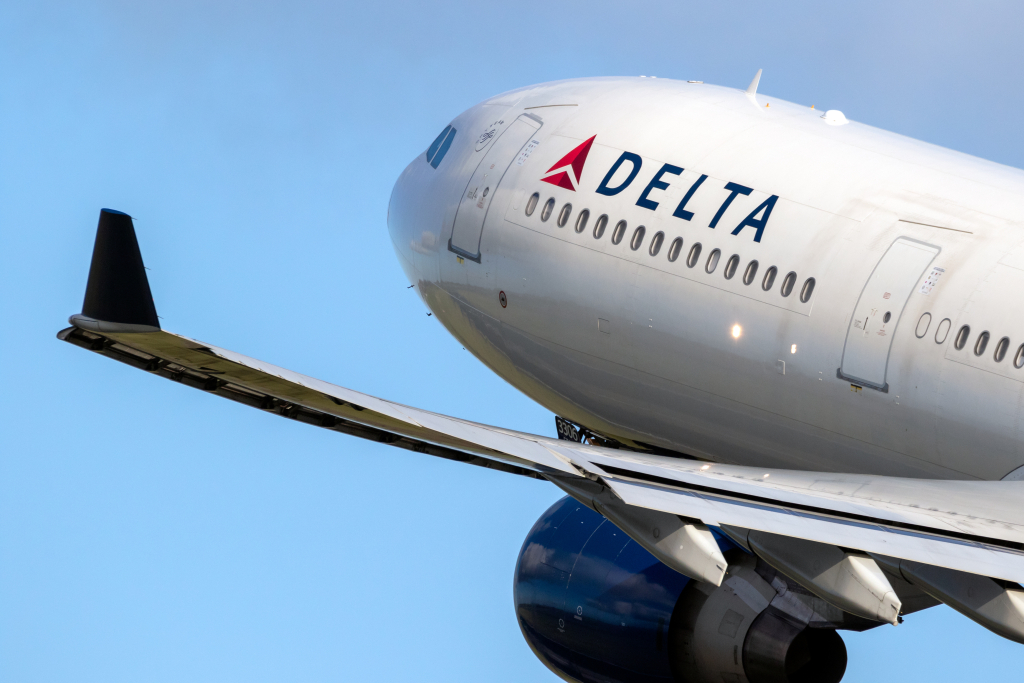
ATLANTA – Delta Air Lines is providing $30,000 in compensation to each passenger who survived a harrowing crash-landing in Toronto on Monday, during which the aircraft burst into flames and flipped upside down.
“Delta Care Team representatives are informing customers that this gesture comes with no strings attached and does not affect their legal rights,” the airline stated in a release to FOX Television Stations.
Safe but Shaken
Deborah Flint, CEO of the Greater Toronto Airports Authority, expressed relief that the incident did not result in fatalities.
“We are incredibly grateful that there was no loss of life and only relatively minor injuries,” Flint told reporters.
Delta CEO Ed Bastian also extended his support, stating, “The hearts of the entire global Delta family are with those affected.”
The Incident: A Harrowing Landing
Delta Connection Flight 4819, traveling from Minneapolis to Toronto, encountered severe difficulties upon landing. The aircraft made a hard touchdown, lost a wing, ignited in flames, and ultimately came to rest upside down on the runway.
Despite the severity of the crash, all 80 individuals on board—76 passengers and four crew members—survived. However, 21 passengers sustained injuries.
What We Know So Far
Air traffic communications between the Toronto Pearson International Airport control tower and the pilots were reportedly normal during the approach. Airport officials confirmed that weather conditions were clear, the runway was dry, and no significant crosswinds were present at the time of the crash.
However, audio recordings indicate that the control tower warned pilots of a possible “bump” in airflow upon landing. Wind gusts reached speeds of up to 40 mph (65 kph).
Unanswered Questions
Investigators have yet to determine the exact cause of the crash. Aviation experts suggest that potential factors include pilot error, mechanical failures—such as landing gear malfunctions—or unexpected weather conditions.
The Transportation Safety Board of Canada is leading the investigation, with support from the U.S. National Transportation Safety Board (NTSB) and the Federal Aviation Administration (FAA).
Survivors Speak Out
Passengers described the terrifying experience in vivid detail.
Peter Carlson, who was en route to a paramedics conference in Toronto, recalled the moment of impact.
“The landing was incredibly forceful. Suddenly, everything went sideways. The next thing I knew, I was upside down, still strapped in,” Carlson told CBC News.
He and another passenger helped a mother and her young son escape from the wreckage before stepping onto the tarmac, where snow and frigid temperatures added to the chaos.
“I didn’t care how cold it was, how far I had to walk, or how long I had to wait—we all just wanted to get out of that aircraft,” he said.
Why Did Everyone Survive?
Aviation experts credit advancements in aircraft engineering and emergency procedures for the lack of fatalities.
Michael McCormick, an assistant professor at Embry-Riddle Aeronautical University, explained that modern aircraft wings are designed to detach in a crash, reducing the risk of fuel-related explosions.
Additionally, Jeff Guzzetti, a former investigator for the FAA and NTSB, noted that airline seats are built to withstand impacts up to 16 times the force of gravity. Seat belts also played a critical role in preventing more severe injuries, as passengers were suspended upside down as the plane skidded to a halt.
What’s Next?
As investigators work to determine the cause of the crash, Delta has taken swift action to assist passengers, offering financial compensation and ongoing support. The aviation community will closely monitor the findings of the investigation to prevent similar incidents in the future.




